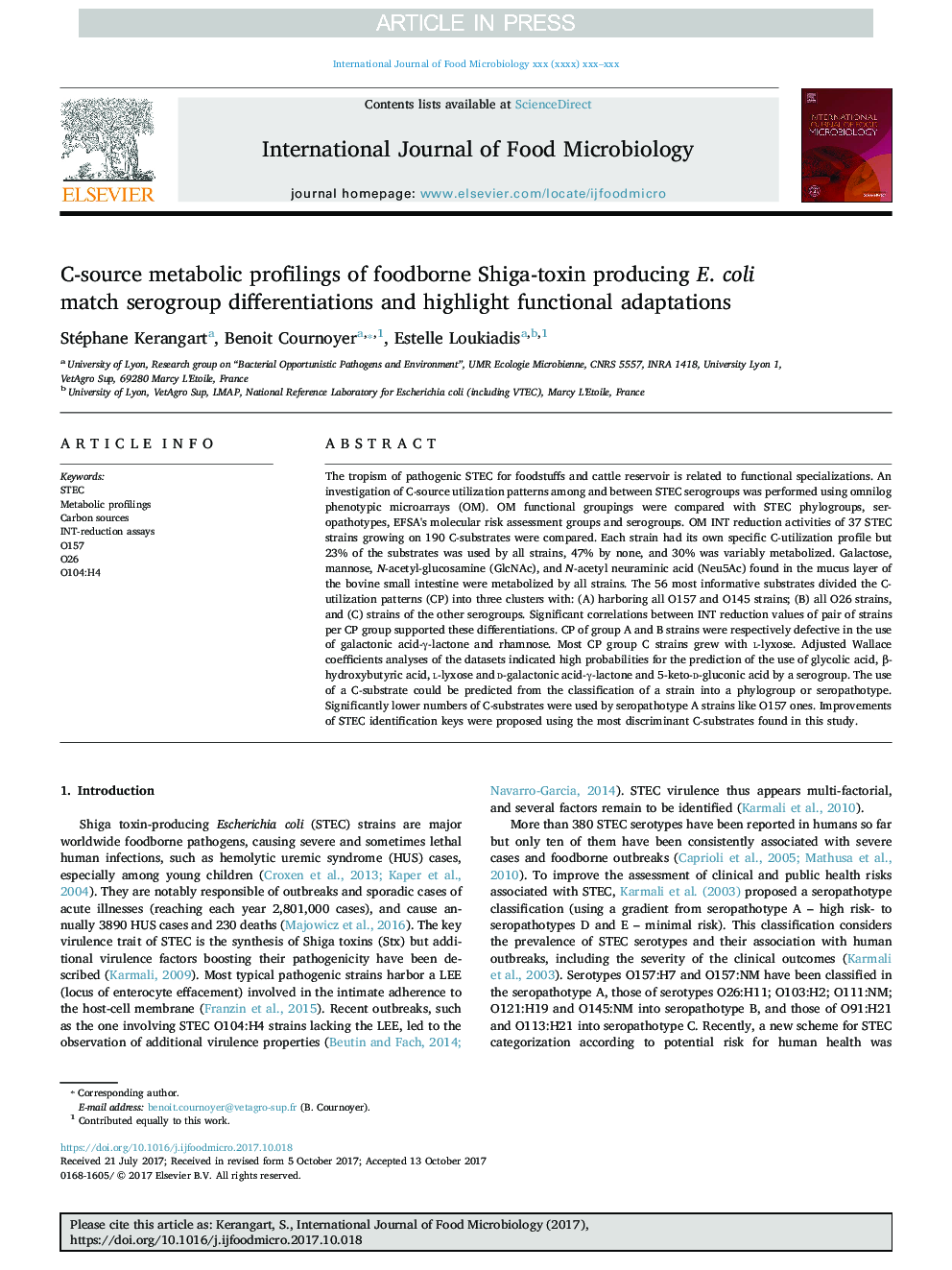| کد مقاله | کد نشریه | سال انتشار | مقاله انگلیسی | نسخه تمام متن |
|---|---|---|---|---|
| 8844342 | 1616517 | 2018 | 13 صفحه PDF | دانلود رایگان |
عنوان انگلیسی مقاله ISI
C-source metabolic profilings of foodborne Shiga-toxin producing E. coli match serogroup differentiations and highlight functional adaptations
دانلود مقاله + سفارش ترجمه
دانلود مقاله ISI انگلیسی
رایگان برای ایرانیان
کلمات کلیدی
موضوعات مرتبط
علوم زیستی و بیوفناوری
علوم کشاورزی و بیولوژیک
دانش تغذیه
پیش نمایش صفحه اول مقاله

چکیده انگلیسی
The tropism of pathogenic STEC for foodstuffs and cattle reservoir is related to functional specializations. An investigation of C-source utilization patterns among and between STEC serogroups was performed using omnilog phenotypic microarrays (OM). OM functional groupings were compared with STEC phylogroups, seropathotypes, EFSA's molecular risk assessment groups and serogroups. OM INT reduction activities of 37 STEC strains growing on 190 C-substrates were compared. Each strain had its own specific C-utilization profile but 23% of the substrates was used by all strains, 47% by none, and 30% was variably metabolized. Galactose, mannose, N-acetyl-glucosamine (GlcNAc), and N-acetyl neuraminic acid (Neu5Ac) found in the mucus layer of the bovine small intestine were metabolized by all strains. The 56 most informative substrates divided the C-utilization patterns (CP) into three clusters with: (A) harboring all O157 and O145 strains; (B) all O26 strains, and (C) strains of the other serogroups. Significant correlations between INT reduction values of pair of strains per CP group supported these differentiations. CP of group A and B strains were respectively defective in the use of galactonic acid-γ-lactone and rhamnose. Most CP group C strains grew with l-lyxose. Adjusted Wallace coefficients analyses of the datasets indicated high probabilities for the prediction of the use of glycolic acid, β-hydroxybutyric acid, l-lyxose and d-galactonic acid-γ-lactone and 5-keto-d-gluconic acid by a serogroup. The use of a C-substrate could be predicted from the classification of a strain into a phylogroup or seropathotype. Significantly lower numbers of C-substrates were used by seropathotype A strains like O157 ones. Improvements of STEC identification keys were proposed using the most discriminant C-substrates found in this study.
ناشر
Database: Elsevier - ScienceDirect (ساینس دایرکت)
Journal: International Journal of Food Microbiology - Volume 266, 2 February 2018, Pages 324-336
Journal: International Journal of Food Microbiology - Volume 266, 2 February 2018, Pages 324-336
نویسندگان
Stéphane Kerangart, Benoit Cournoyer, Estelle Loukiadis,